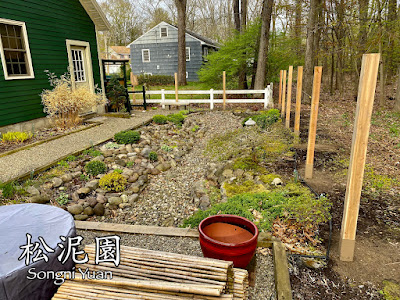I was visiting a local nursery, with no plans to buy, just browse. However, as usual, I could not control myself.
I loved the way that the Crabapple tree I planted in the stroll garden last year had turned out.
It blocks the view of my neighbor's house, made a great transition point between the viewing garden and the stroll garden, and the blossoms this spring were spectacular.
The problem was that at the opposite end of the garden, just behind the small Moon Lantern, there was a void that I felt needed to be filled.
Primarily, the view near and above the fence was characterized by the large Snowmound Spiraea, a telephone pole, and an open view of the neighbors across the street.
I thought having a similar sized tree, but a different variety, would help add some balance to the view.
While at the nursery, I stumbled upon a tree that immediately caught my attention. A First Flame Maple "Iseli Introduction" (Acer x pseudosieboldianum).
This maple has star shaped leaves that are a bright red-orange. The colors were more fall-like than spring. Mid-summer, the leaves should turn a light green. However, the red-orange leaves should continue to emerge throughout the summer.
Over time, the tree will grow to 20' H and 15' W, but it can be trimmed as easy as any other Acer type maple tree, like my dwarfs I have elsewhere in the garden.
I also think it will help to distract from the telephone pole as well, and be well centered with the lantern and rock in the viewing area of the garden.
I love the color and think it will make a nice addition to the viewing garden, adding a fall-like interest all summer.
Later in the week I will move some existing plants around, prep and amend the soil, and plant the tree.




















